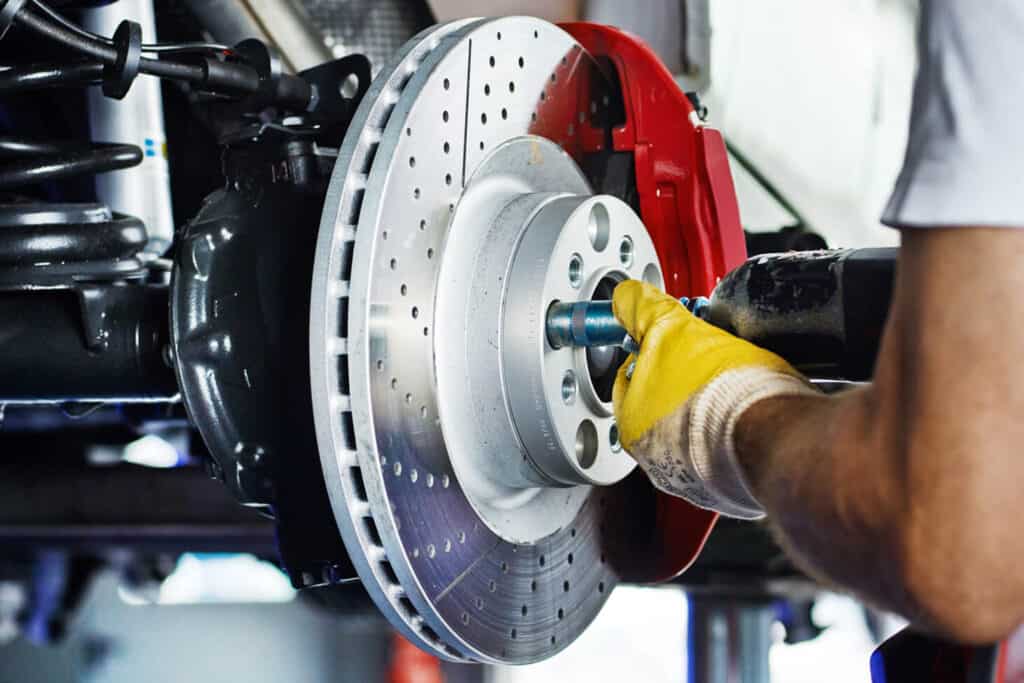Introduction: Understanding the Impact of Brake System Health on Fleet Vehicle Downtime
The health of a fleet’s brake systems plays a critical role in ensuring the safety and efficiency of the vehicles. Poor brake system health can lead to increased downtime, resulting in lost productivity and revenue. This article will explore the connection between brake system health and fleet vehicle downtime, discuss the cost implications of downtime due to brake issues, and provide strategies for reducing downtime through proactive maintenance and driver training.
How Poor Brake System Health Contributes to Increased Downtime
Poor brake system health can result from several factors, including worn brake pads, damaged rotors, and inadequate brake fluid levels. These issues can cause vehicle downtime due to unscheduled maintenance and repairs, leading to lost productivity and increased costs. Additionally, inadequate brake performance can result in accidents, further exacerbating downtime and the associated expenses.
The Cost Implications of Fleet Vehicle Downtime Due to Brake Issues
Downtime due to brake system issues can have significant cost implications for fleet operators. These costs can include labor and parts for repairs, towing fees, and lost revenue due to the inability to use the vehicle for its intended purpose. Moreover, extended downtime may lead to missed deadlines and customer dissatisfaction, potentially harming the company’s reputation and future business prospects.

Identifying Common Brake System Problems that Lead to Downtime
To minimize fleet vehicle downtime caused by brake system issues, it’s essential to identify common problems early. One such problem is worn brake pads, which, over time, lose their ability to stop the vehicle effectively. This can lead to longer stopping distances and decreased vehicle safety. Regularly inspecting the brake pads for wear and replacing them when needed can prevent further complications and minimize downtime.
Damaged rotors are another issue that can lead to fleet vehicle downtime. Excessive heat, rust, or warping can damage brake rotors, affecting their performance and potentially leading to brake failure. By monitoring the condition of the rotors and addressing any signs of damage, fleet operators can maintain optimal brake system performance and avoid unnecessary downtime.
Inadequate brake fluid levels can also have a significant impact on fleet vehicle downtime. Low brake fluid levels can cause a reduction in braking power and may lead to brake system failure if not addressed promptly. Regularly checking and maintaining proper brake fluid levels is crucial for preventing this issue and ensuring that the fleet vehicles remain operational.
Finally, sticking calipers can lead to increased vehicle downtime. Calipers that don’t release properly can cause the brake pads to remain in contact with the rotors, leading to increased wear and potential overheating issues. Regularly inspecting and maintaining the calipers can help prevent this problem and reduce the likelihood of unexpected downtime caused by brake system malfunctions.
Implementing a Proactive Brake Maintenance Schedule to Reduce Downtime
A proactive brake maintenance schedule can help fleet operators identify and address brake system issues before they lead to downtime. This schedule should include regular inspections of brake components, replacement of worn parts, and timely brake fluid changes. By staying ahead of brake system issues, fleet operators can minimize downtime and associated costs.
Choosing the Right Brake Components to Enhance Fleet Vehicle Uptime
Selecting the appropriate brake components for a fleet can play a significant role in reducing downtime. High-quality brake pads and rotors designed for the specific demands of a fleet’s vehicles can provide better performance and longer service life, resulting in less frequent maintenance and repairs. Moreover, investing in premium brake components can ultimately result in cost savings due to reduced downtime and lower repair costs.
Monitoring and Tracking Fleet Brake System Health and Vehicle Downtime Metrics
Fleet operators should establish systems to monitor and track brake system health and vehicle downtime metrics. This can involve leveraging fleet management software to collect and analyze data on brake component wear, repair frequency, and downtime duration. By tracking these metrics, fleet managers can identify trends, anticipate potential issues, and make informed decisions to optimize brake system health and minimize downtime.

Training Fleet Drivers to Detect and Report Brake System Issues Early
Educating fleet drivers on the signs of brake system issues and the importance of reporting problems promptly can help minimize downtime. Drivers should be trained to recognize symptoms such as reduced braking power, strange noises, or vibrations when applying the brakes. By encouraging drivers to communicate brake system concerns early, fleet operators can address issues before they lead to downtime and more extensive repairs.
Developing a Rapid Response Plan for Brake System-Related Downtime Events
Despite proactive maintenance and driver training, unexpected brake system issues can still occur. Fleet operators should develop a rapid response plan to address brake-related downtime events efficiently. This plan may involve having a dedicated maintenance team on standby, a well-stocked inventory of brake components, and a network of reliable towing and repair service providers. By having a robust response plan in place, fleet operators can minimize the duration of downtime and the impact on business operations.
Conclusion: Improve Fleet Efficiency by Prioritizing Brake System Health and Reducing Vehicle Downtime
In conclusion, prioritizing brake system health and implementing strategies to minimize downtime can have a significant positive impact on fleet efficiency and cost management. By understanding the connection between brake system health and vehicle downtime, fleet operators can implement proactive maintenance schedules, invest in high-quality brake components, and educate drivers on recognizing and reporting brake system issues. These efforts will ultimately lead to reduced downtime, lower maintenance costs, and improved fleet performance.
